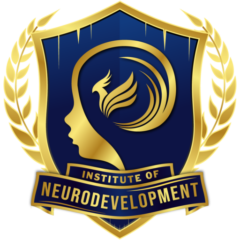Special Education
Educational strategies and legal policies that influence effective school education for children, adolescents and young adults. The focus is on the symptoms of autism spectrum disorders (ASD) in the classroom and how general education teachers can effectively facilitate learning.
The importance of active student-teacher relationships (STRs) in the face of challenging behavior at an early age is discussed, including how to build positive STRs. In junior high school and high school, social relationships serve as a protective factor for mental health problems (depression, anxiety, etc.). In post-higher education situations, the outcome of young adults with ASD remains poor (eg, loneliness, unemployment).


Strategies to help young people in their transition to adulthood are being discussed. While there are many other aspects to an educational program suitable for people with ASD (such as curriculum content), this chapter has the potential to serve a wide range of audiences, including teachers, staff, researchers, and parents. Focus on a current problem. Much has been learned about raising children with Autism Spectrum Disorders (ASD) and the success of the program is widely touted, but children and adolescents with ASD are still in conflict and restricted with mainstream teachers. There is an increased risk of poor academic performance, such as in classrooms. Such findings may be due to the presence of significant social difficulties inherent in the diagnosis of ASD and the behavioral difficulties often exhibited by children with ASD. In fact, it is documented that people with ASD have a much higher level of behavioral problems than those with intellectual disabilities and those who are usually developing. These increased externalization and internalization problems, as well as poor social skills, apparent in ASD, can also put these young students at risk of poor long-term academic adaptation.
It is not uncommon for these students to be placed in general education classrooms, as nearly half (44%) of ASD students are above the typical range of cognitive abilities. Indeed, mainstream school placements have been shown to be beneficial to many students with ASD and are often preferred by parents, but mainstream school teachers benefit students with ASD in the classroom. Little specific training on how to manage the system. In addition, many school districts are not ready to accept such students, as evidenced by the number of proceedings involving families of ASD students. The purpose of this blog is to discuss recent selected advances in research on autism in the classroom and educational issues related to ASD in the 21st century.
1. Placement
ASD students educated in a general education environment often have greater success than students enrolled in special education classes. Parents of children with ASD generally favor inclusion.
Studies show that ASD student placement decisions are not always based on student needs. Students in general education had higher overall mean scores for cognitive and adaptive function, but this difference was not statistically significant, probably due to the smaller sample size. School leaders often made placement decisions based on their experience and beliefs.
In particular, ASD students and students with emotional disabilities were least likely to be recommended for inclusive classroom placement. Logistic regression analysis showed that child age, family income, and social skills predict education placement, so older children in high-income households with low social skills are more restricted than private. It is more likely that you will be placed in a strict school.
Disagreements about the outcome of the Individual Education Plan (IEP) often increase tensions between parents and teachers. A study of 142 parents of infants with ASD (ages 4-8) reported that a significant proportion of parents were dissatisfied with the IEP process. Specifically, 41% of parents reported that there was no or no correspondence between the IEP document and the benefits they received. As reported by both parents and teachers, parent-teacher relationships and school involvement were positively linked to IEP satisfaction. In particular, family income and financial resources were also significantly associated with IEP satisfaction, so families with more financial resources tended to be happier. Nonetheless, these results underscore the importance of working with parents to increase coherence in the home and school context.
2.Role of the family at school
3.Relationship between teachers and students
Currently, approximately 1,308,100 associate professionals or educational assistants are employed. That number is expected to increase by an average of 8% by 2026. The expected increase in semi-professional workers can be attributed to the demand for inclusive education, which can perpetuate overconfidence in their role in the school system. Therefore, there is a great need to assist paraprofessors in teaching and managing the behavior of students with disabilities in a comprehensive environment. In addition, the great reliance on paraprofessional staff reduces the chances for teachers to develop close and collaborative relationships with these students.
Existing school administrator preparation programs provide little knowledge needed to understand student behavior at ASD and implement inclusion programs. Teachers at the kindergarten to high school level vary widely in ASD-specific knowledge and self-efficacy, and many teachers report lack of training or reluctance to teach students in ASD. However, the high incidence of ASD indicates that educators across the country will inevitably encounter ASD students and are based on evidence that improves academic and social learning opportunities for these children. It emphasizes the need to prepare special education teachers for the approach. When it comes to developing the professional skills of university teachers on ASD, research on the best ways to support teachers in accommodating students with ASD in the classroom is still limited. The amount of information available about the best ways to support these students can be overwhelming for professors to sift themselves, so it may be beneficial to develop teacher education. It is clear that there is.
